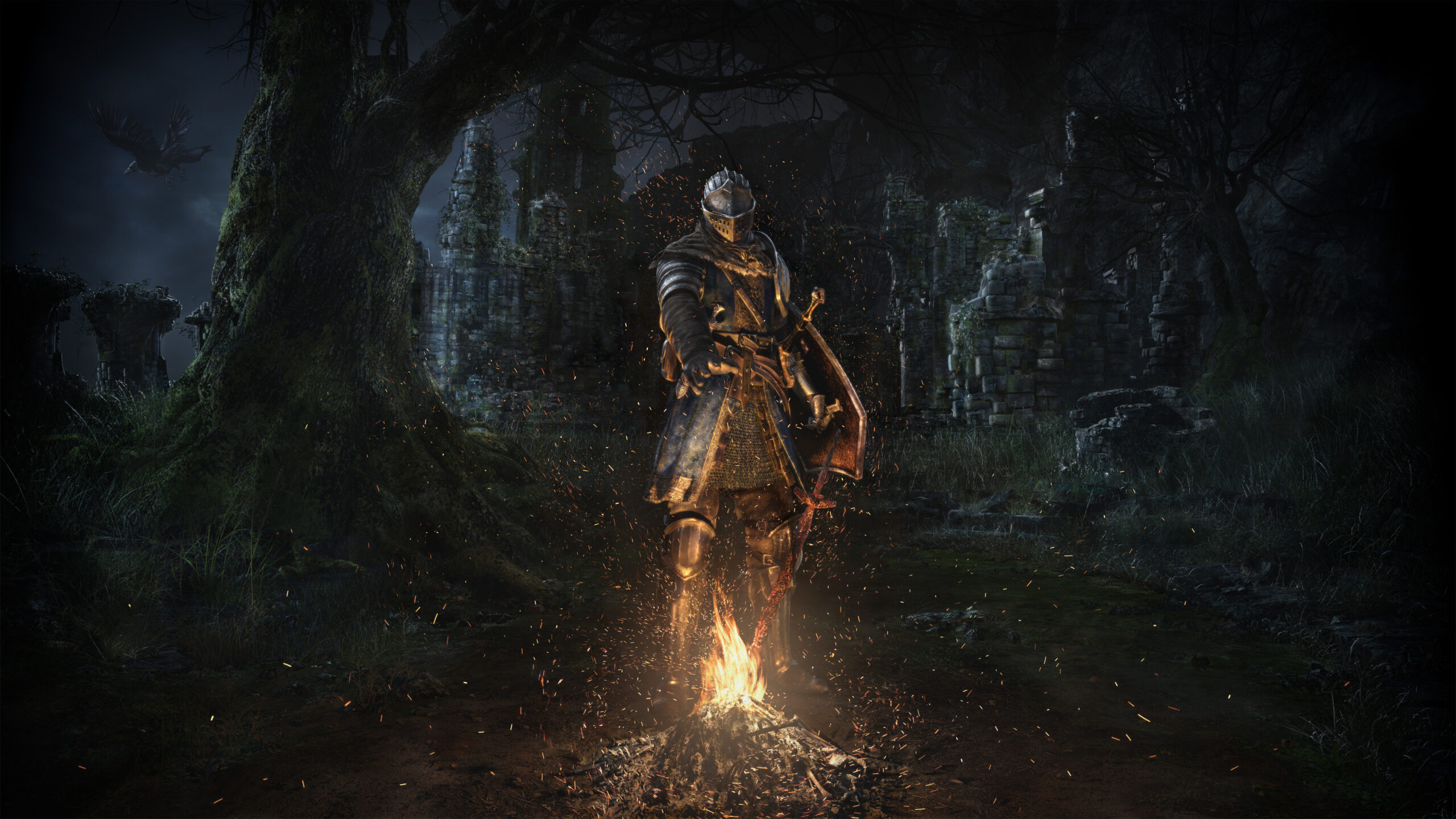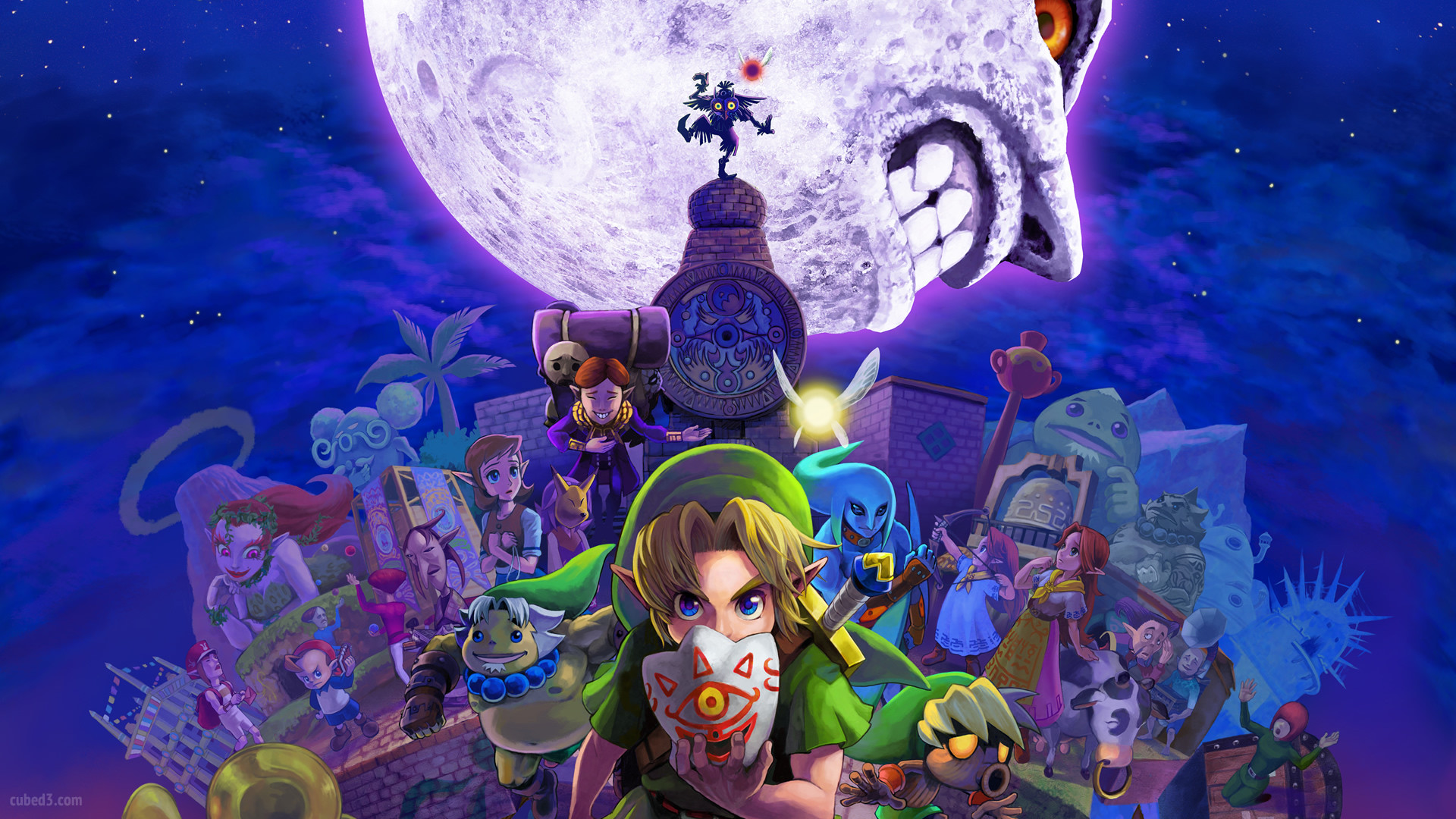This article was originally posted on December 13, 2019.
This generation has seen a plethora of games with their own comeback story. Games like Destiny, The Division, Rainbow Six: Siege and even the incredibly controversial Star Wars: Battlefront 2 have all been able to claw their way back from obsolescence through updates and content drops. Anthem is one such game that is currently positioned at the top of games that are dead or dying due to less-than-desirable releases (*cough* Fallout 76 *cough*). The game was massively criticised for being a buggy, unpolished mess that made very silly mistakes. People really wondered if this was the game that BioWare had been working on for six years only to discover production hadn’t even started until a little over a year before its release – the result of extremely poor management and elitism within the studio. I myself enjoyed the core gameplay of Anthem but quickly grew tired and frustrated with its questionable design flaws and horrendous performance. It was a game that I believed to be rife with potential yet was held back by … a lot of issues. The game has been out for nine months and developer BioWare (as well as its publisher, EA) has finally released a statement claiming there will be an overhaul for the game that should hopefully put it back in the spotlight (for the right reasons this time). This news came as a surprise to no one since it has become a staple of the genre lately. With this in mind, let’s take a look at why the game doesn’t deserve a second chance from its players.
Let’s go from the top. Anthem was officially revealed during E3/EA Play 2017 with a cinematic trailer. We didn’t hear that much until E3/EA Play the next year. People were incredibly hyped for BioWare’s shared-world looter shooter, even after the disappointment that was Mass Effect: Andromeda. Enthusiastic fans were even touting it as the next ‘Destiny killer’. At E3/EA Play 2018, they showed gameplay solely surrounding the flight/movement mechanics and, well, it didn’t look great. Probably best shown with Jim Sterling’s reaction, it was more or less just touting raw visual fidelity (EA continuing to flex the problematic Frostbite engine) and rather basic gameplay. To make matters worse, the same handful of images and concept art were shown on repeat during the developers’ speeches regarding the game which really was a sign of how little BioWare had actually built for Anthem.
Fast forward to January 2019, the game’s release is a mere month away and BioWare/EA are releasing a limited-time demo for people to try (please make note of how it’s a demo and NOT a beta) ahead of its impending release. The first wave of the demo is for people who managed to obtain codes, mostly through pre-ordering or friends who shared their codes. I managed to gain access to this first wave of the demo and let me tell you, it was rough. Despite being mired in technical issues, I still saw potential in the game. Regardless, this was a demo played like a beta. Loading screens would get stuck in an infinite loop, disconnections occurred left, right and centre, and a myriad of performance issues – perhaps this was BioWare’s way of warning everyone that this was a game better left ignored.
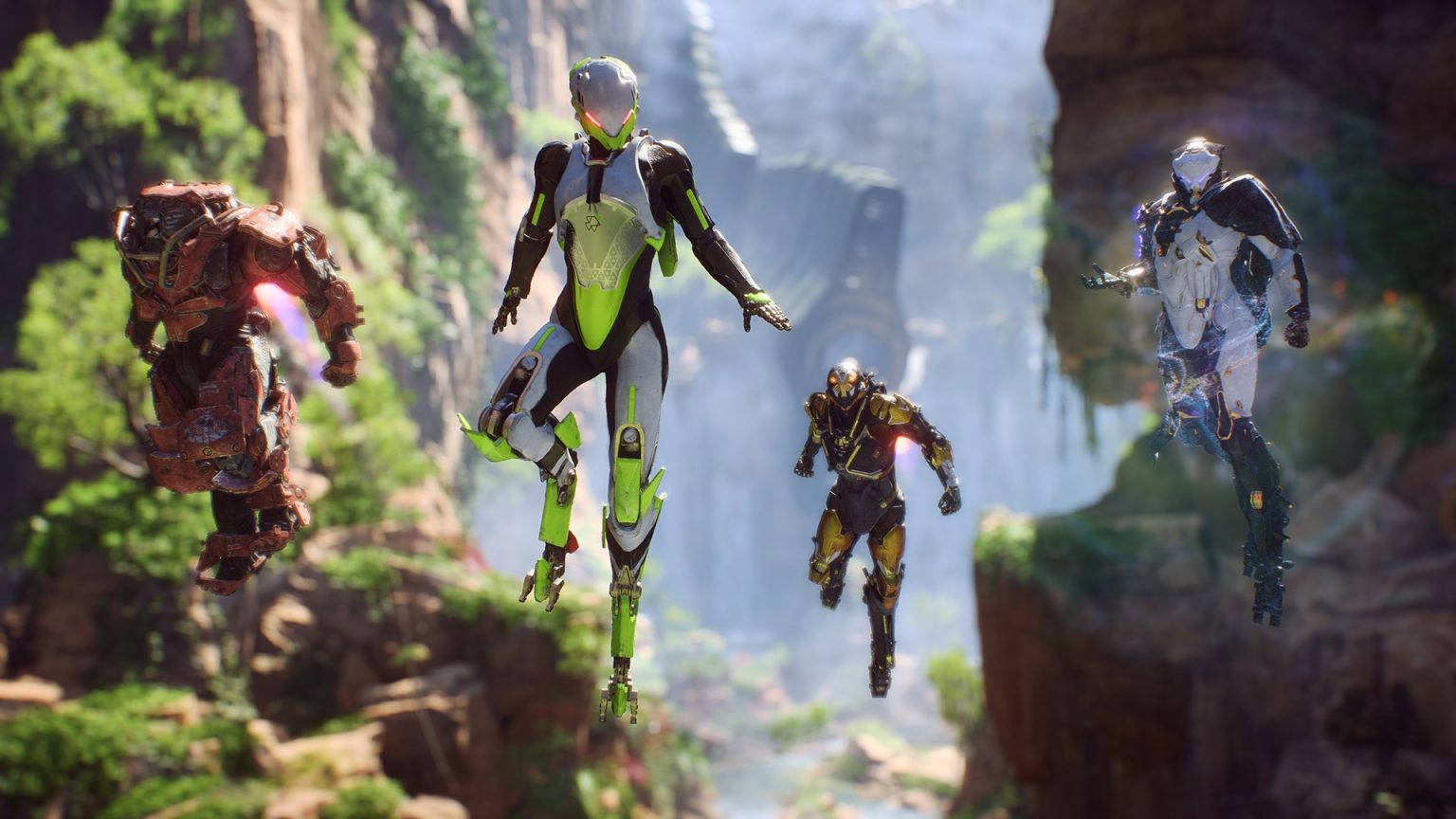
Sourced from WellPlayed
The second wave of the demo wasn’t much better either. Sure, the loading bug was mitigated enough to the point that consoles players were able to play the damn thing, but the second demo was still a host to numerous issues. It was later revealed that the demo builds were outdated (which defeats the purpose of a playable demo). Still, to appease EA’s bottom line for its shareholders, Anthem remained on track to release on February 22, 2019, with a VIP Early Access period beginning a week earlier for Origin Premier Access members. The game was in desperate need of a delay, but the AAA industry is the AAA industry and publishers are prone to push something out the door and charge people for it sooner rather than later. Somewhat impressively, the released game shipped with even more issues than the bug-ridden demos. It was critically panned. In my review, I scored it very poorly, although I maintained that it showed promise and nothing about it has changed since my review. At E3/EA Play 2019 BioWare said little more than: “Oh, the Cataclysm event is live right now on our PTS (public test server).” This did little to inspire confidence in the game’s future.
On April 4, 2019, Kotaku News Editor Jason Schrier published an eye-opening article titled “How Anthem Went Wrong”. Schrier didn’t pull any punches in revealing the troubled “development” of Anthem. According to Schrier, there were a number of issues that caused the game’s development to be rather tumultuous, including an astounding level of arrogance and toxicity within the studio itself, mostly from the Edmonton team that made the original Mass Effect trilogy. One of the most concerning parts about this very, very informative article (seriously, I highly recommend you read it) is that it read very similarly to Schrier’s 2017 article on Mass Effect: Andromeda’s troubled development. The main takeaways were that the Edmonton team working on the original Mass Effect games had acquired some self-entitled sense of elitism towards the rest of BioWare, that crunch culture was very much alive within the studio to the point where people quitting or taking leave due to stress were simply labelled “stress casualties”.
“A ‘stress casualty’ at BioWare means someone had such a mental breakdown from the stress they’re just gone for one to three months. Some come back, some don’t.” – a former BioWare developer via Kotaku
Let’s get something straight: ‘stress casualty’ is a term used for people in the military and it is used to describe people who go through so much mental strain from the horrors of war that it messes with everything in their brain, it’s often linked to PTSD. That’s how serious stress casualties actually are and the people at BioWare freely throw this categorisation around due to how harmful their working conditions are. This kind of stuff should not happen nor should it be normalised within a studio.
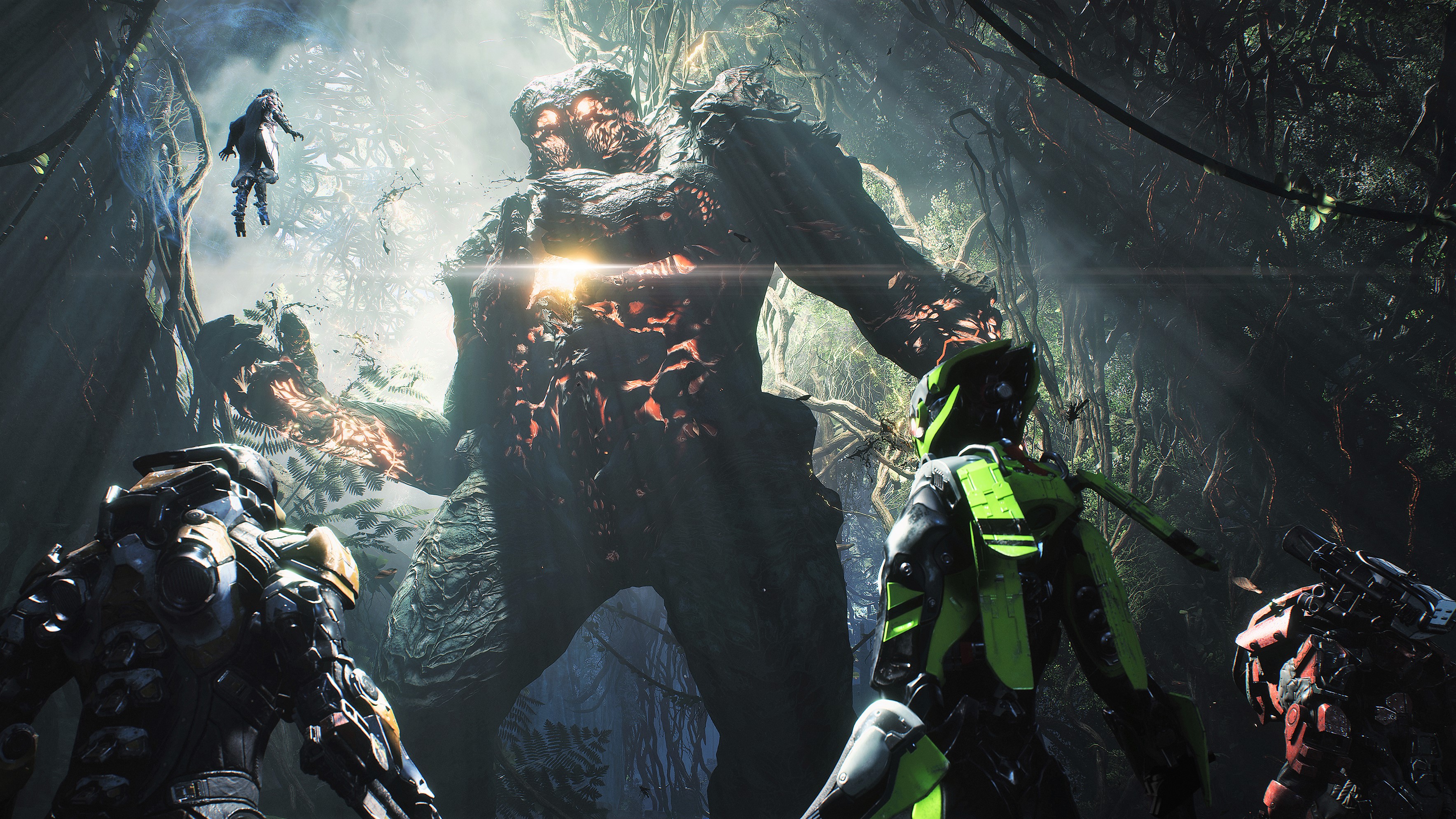
Sourced from Digital Trends
Now let’s move on to an extremely critical mistake that BioWare made with Anthem’s design and development, which was also a result of a toxic working environment. One of the more successful titles that BioWare worked on is Star Wars: The Old Republic, a MMORPG game set within the Star Wars universe. In fact, BioWare created an entire division at BioWare Austin solely for this game, which they later assigned to help with the development of Anthem, an online shared-world shooter. The Austin team had a deep understanding of game economies, including skill, power, currency and cosmetic economies. Sadly the Edmonton team’s narcissism became a constant roadblock for the team that actually had experience in this kind of game. This was BioWare’s first critical mistake: not listening to the team of people who had learned and grown as a developer for a successful online game is downright ignorant and this ignorance is clearly represented in the final product.
“Anthem is the game you get from a studio that is at war with itself. Edmonton understandably has the perspective of, ‘We are the original BioWare.’ Anybody not part of that brand is lesser, and does not garner the same level of trust as people that are in the Edmonton office. And so I think that’s a little bit of an issue there.” – a former BioWare developer via Kotaku
This borderline aristocratic culture within the entire Anthem development team is perplexing and the idea of anyone being “lesser” because they didn’t work on a particular game. This would be like Destiny 2 players excluding someone from their raid group(s) because they lack an exotic sniper rifle … oh wait. This lays the groundwork for inter-studio rivalry within an environment or community. For a community or playerbase, it’s an annoyance that puts up roadblocks that may not be in their control, especially since a majority of these online games rely on random number generators for loot. For a workplace, it’s disruptive and destructive. How can you cooperate with someone who refuses to cooperate with you? All it leads to is hostility and resentment, both of which are corrosive and counterproductive. These poor Austin developers would have been butting heads with the Edmonton team on just about every design decision, which is not how you make a game. Mind you, this is only half of the decision-making that went wrong. The other half were the result of either arrogance or incompetence.
One beautiful thing about an interactive and expressive medium such as gaming is that when someone makes a mistake, the entire industry learns from it. One of the clearest examples of this was made by EA (surprise, surprise) and DICE in the form of Star Wars: Battlefront II. 2017’s Battlefront II (not to be confused with the gem from 2005) was embroiled in controversy due to its ill-conceived game design, which offered players a multiplayer power progression system tied to randomised loot boxes that could be purchased with real money. Let’s quickly look at why this progression system is fundamentally flawed.
Part of a game designer’s job is to ensure that a game is rewarding and engaging enough that the player feels like they aren’t wasting their time. This is something that games like Destiny were criticised heavily for. Destiny’s tangible, in-game rewards were stingy and unsatisfying. You’ll find that a lot of RPGs that rely on more traditional levelling systems can get away with this since every engagement rewards experience points, something that will benefit the player. In games like Destiny or Battlefront II, the core path of progression is randomised. To make matters worse for Battlefront II, the caveat of its progression system was tied to microtransactions. These loot boxes were not only crucial to the growth of your character’s power, they were egregiously unrewarding to incentivise more user spending. These randomised loot pools are purposely padded out with filler (junk items) to make the marginally less crappy rewards in the loot pool seem more valuable by comparison. Once you tie this to a progression system, you have a recipe for disaster. Imagine if something that could make your character more powerful was in the same loot pool as something that changes the colour of your clothes. Don’t get me wrong, both of these things are important, but they should not be in the same reward pool.

Sourced from PCMag
This generation has seen a massive increase in the number of live service games, with the aforementioned Destiny kicking off the craze, demonstrating how this kind of game might flourish in a console environment. Until then, live service games were predominantly popular on PC, like World of Warcraft, Team Fortress 2 and Counter Strike: Global Offensive. Of course, the early days of these games weren’t smooth sailing. Destiny didn’t find its feet until a year after release, when its first major expansion, The Taken King, fundamentally changed the game, revamping old systems, introducing a compelling story, offering both a well-designed endgame and a superb raid for six players.
The Division followed suit, similarly suffering an underwhelming launch period before approaching a good experience a year or two later, with Ubisoft Massive dedicated to improving a defective, imperfect game. Despite Destiny’s rough start, Destiny 2 experienced an equally underwhelming launch, not only repeating many of the same core mistakes as the original but also introducing some new mistakes such as fixed perk rolls on weapons and armour. However, this late in the console generation, most developers seem to be clued into what they should and shouldn’t do as shown with The Division 2, a sequel that made vast improvements on its predecessor’s ideas and sought to rectify every mistake made by the original game.
Anthem, however, appears to be a relic of six years ago. Most studios and developers would pay attention to what their audience likes and doesn’t like, but BioWare failed to even acknowledge the lessons learned by comparative titles, ignoring and discouraging team members who mentioned these games as a matter of policy, preferring instead to work in a vacuum.
“A few people who worked on the game said that trying to make comparisons to Destiny would elicit negative reactions from studio leadership.”
Destiny is arguably one of the most important games in its genre due to how it evolved over time. The game personified the concept of a comeback kid, eliciting a negative reception at launch only to later become one of the most well-received live service games. It was fortunate enough to more or less be the first of its kind and remain uncontested in the console space until 2016, where The Division tried (and mostly failed) to win over the audience. Both games were, however, unique enough to stand alone. Anthem was not. If you look at most of its design, it’s a poor man’s Destiny with even less content than Bungie’s shared-world shooter from five years earlier.
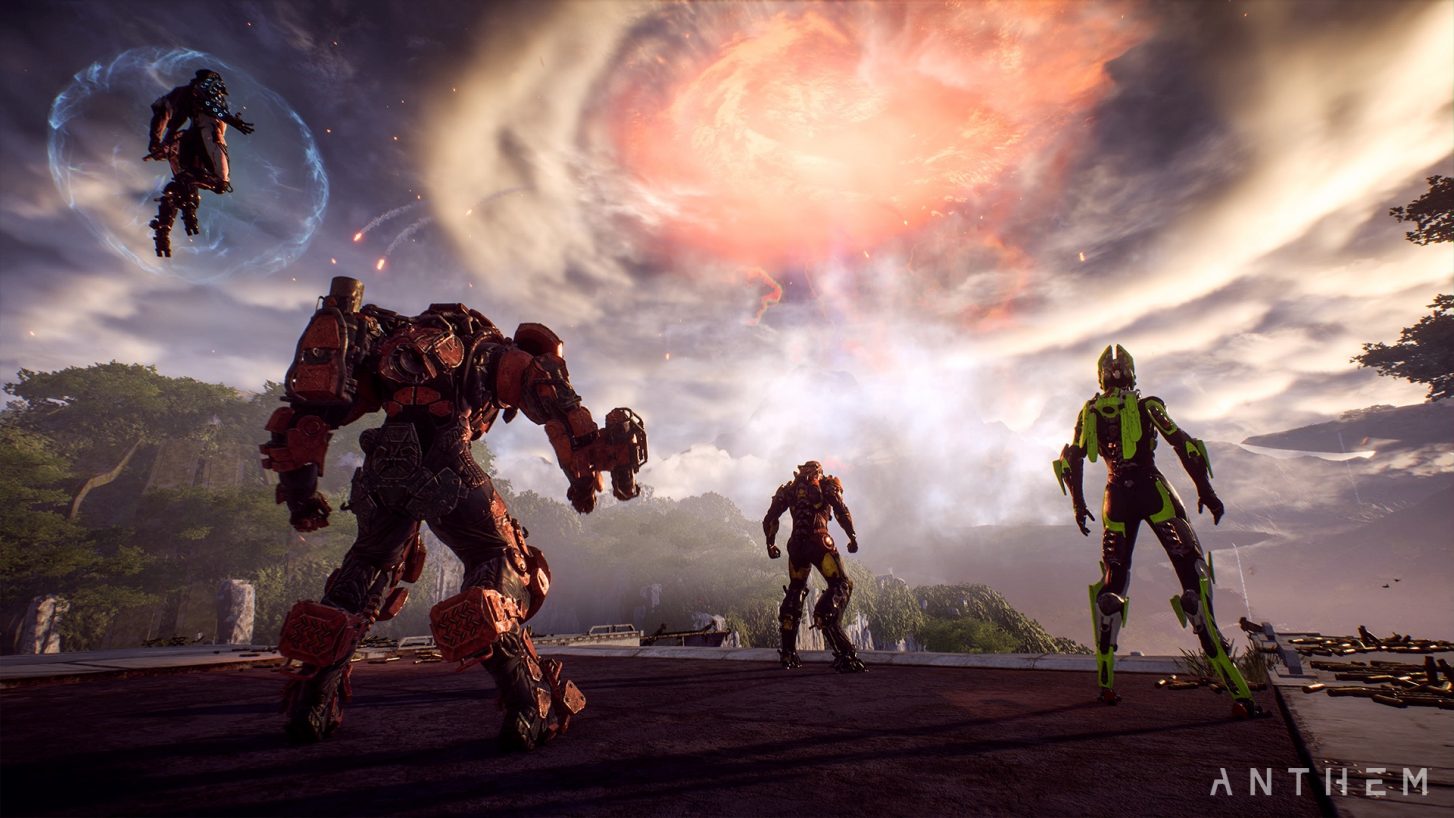
Sourced from mxdwn Games
“We were told quite definitively, ‘This isn’t Destiny,’ but it kind of is. What you’re describing is beginning to go into that realm. They didn’t want to make those correlations, but at the same time, when you’re talking about fire teams, and going off and doing raids together, about gun combat, spells, things like that, well there’s a lot of elements there that correlate, that cross over.” – a former BioWare developer via Kotaku
Developers are allowed to make mistakes. It’s how the industry and medium grow into something much larger than we can imagine. If developers weren’t allowed to make mistakes then video games would become a homogenised, mass-produced product … well more than they currently are. However, as the old adage goes: “those who do not learn from history are doomed to repeat it.” This could not be any more fitting than for the story of Anthem’s development. By refusing to acknowledge games like Destiny, The Division or Warframe, BioWare has only itself to blame for the design mistakes it made with Anthem. None of the mistakes were new. Let’s look at these mistakes:
- An unrewarding loot system – Like Destiny, Anthem wasn’t respectful of the player’s time. Players would raise the difficulty to increase the chances of receiving top-tier rewards, only for the game to give them worthless drops. The only time that the game felt rewarding was when the game was bugged and dropped good items at a higher rate – the only thing that BioWare seemed to care about patching quickly. Very quickly. Even with the patches and hotfixes that followed its release, the game never felt like it was worth the effort since more often than not you would be disappointed with your rewards.
- Difficulty design based around increasing the size of health pools rather than adding challenging mechanics – Like The Division, Anthem was reliant on difficulty that increased how long it took you to kill things while decreasing how long it took for you to be killed. At launch, the game [Anthem] helpfully informed the player of how much the enemy’s health and damage would be scaled up to when increasing the difficulty. If you were to select the Grandmaster III difficulty, enemy health and damage would increase by a whopping 950%. Yes, enemies who were already bordering on bullet-spongey would take almost ten times longer to kill. Do you know why people enjoyed Destiny 2: Forsaken so much? Because, instead of forcing the player to sit in one position for 20 minutes and chip away at an enemy’s health, only for it to recover three seconds later and bring you back to square one, Forsaken would test the player’s awareness by crowding the room and focusing on crowd control rather than consistently damaging a single point or target. The only time Destiny 2 ever had a DPS race was with its raid bosses, and even then those bosses were so intricately designed that the DPS factored more into the team’s coordination than raw damage output.
- Anthem offers a fun core gameplay loop, and nothing else – Like Warframe, Anthem launched and people marvelled at its core concept and gameplay loop, which revolved around the flight and movement system. BioWare had admittedly done an excellent job at making the four Javelins feel good. Footsteps were weighty but not cumbersome enough that moving around felt like a chore. Additionally, each Javelin was purpose-built with its role in mind. The Storm Javelin felt the most unique and the Ranger felt the most bland. Outside of this, however, there was not much else. Players were expected to grind out the same three mission types over and over again to occasionally unlock a higher-tier variant of each mission type in the hopes of obtaining a good reward. Spoiler: the rewards were never worth it. There were also three strongholds to grind out for rewards (which, once again, were never worth it). The game’s grind was inherently broken. Anthem wanted players to grind for powerful gear to power up and take on the more “challenging” difficulties (read: spongier difficulties), but to what end? There weren’t any raid activities, there weren’t loot pools exclusive to activities like there are in Destiny 2. The game wanted the player to grind for the sake of grinding.
- Conflicting design – Anthem had an exceptionally poor design flaw where the game made sure that you, the player, capitalised on its unique movement systems (read: the flying mechanics) as much as possible. But the conceited nature of the game’s design was quickly uprooted once the endgame kicked in, punishing players for using the very movement system they had just been taught to use in excessive amounts. Even the Javelins ”Storm” and “Colossus”, whose design was to absorb a little more damage than the other Javelins, would barely stand a chance in the higher-level content. Imagine being at school and learning how to solve a math equation with one method, only for the test to require you to use another method you were never taught – it’s counterintuitive.
- Very poor optimisation – There’s not a whole lot to say about this. Anthem was riddled with bugs and technical issues, not because it was an ambitious title but because BioWare was forced to use a troublesome engine (Frostbite) which was purpose-built for very controlled rendering environments like Battlefield and Battlefront. So the game ran like crap, struggled to render and suffered from numerous bugs in just about every game activity. It honestly felt like BioWare took development tips from Todd Howard and Fallout 76.
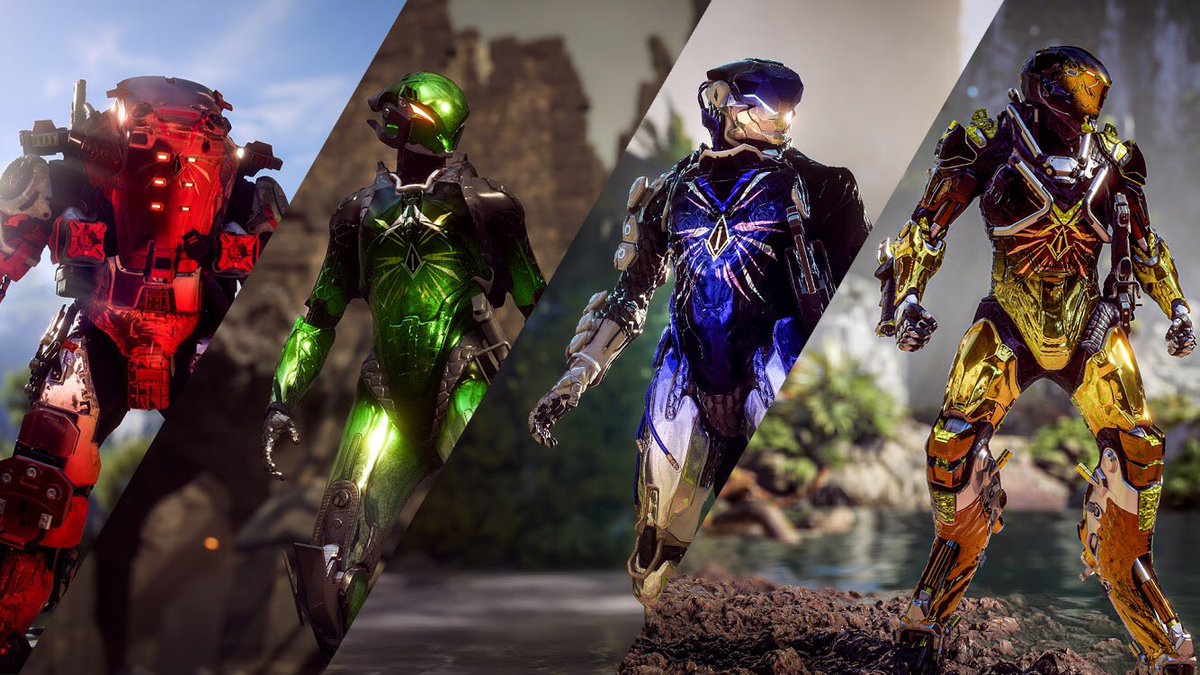
Sourced from Anthem on Twitter
Notice how a lot of these mistakes are mistakes already made by games? Mistakes that the industry has learned from and moved on from – even The Division moved well beyond its bullet sponge issue in the sequel. By refusing to learn from the mistakes these games made, BioWare (and, by extension, EA) chose to make these poor design choices. Poor design choices which probably seemed like a good idea to the “core team”, who had chosen to remain ignorant of competing titles. When you think about it, if a person or a group of people are so arrogant that they would willingly make such obvious mistakes because improving on design might mean admitting that they aren’t the greatest in the world, do they deserve a second chance? The fact that both BioWare Austin and EA were excited to release Anthem even though, internally, some of the people making the game knew it was a trainwreck should be enough for you to recognise just how unbelievably inept this developer/publisher duo can be.
“I don’t think we knew what Anthem was going to be when it shipped. If we had known the shipped game would have that many problems, then that’s a completely different take than, ‘Oh, it’s OK to get this out now because we can improve it later.’ That wasn’t the case. Nobody did believe it was this flawed or this broken. Everyone actually thought, ‘We have something here, and we think it’s pretty good.’” – a former BioWare developer via Kotaku
Now this isn’t to say that those at BioWare who worked on Anthem deserve to be punished for their work. When you consider how quickly they had to compile the entire game under such typically horrendous conditions, how they were negatively impacted by the notion of “BioWare magic”, and how they endured a constant shift in management and design, they did an admirable job. Sure, the game was a wreck. But given how much the odds were stacked against them (an engine that would break itself, constant spitballing of ideas that never came to fruition, scrapping and restarting core design and development, the aristocratic work culture, the crunch culture that was so bad people would just leave for extended periods), it is clear there is strong talent within the studio. And I sincerely hope those individuals can get out of such a destructive environment and move on to bigger and better things.
Surely with all these design mistakes laid out, we’ve firmly established why Anthem should remain dead and buried, right? Unfortunately, no. One thing that often goes unnoticed is how predatory the vast majority of the AAA industry is. Publishers can be quite willing to appease shareholders at the cost of their integrity like Activision-Blizzard’s Bobby Kotick, for example, who boasts about record profits while laying off hundreds of people who worked for the publisher. The past few generations of gaming have seen big publishers implement increasingly egregious money-making tactics, as seen with annual passes for games, microtransactions that compromise game design, cosmetic economies being designed entirely to exploit the player, along slimy tactics to manipulate the player into putting more money into their games by pairing them with more powerful human opponents they can’t compete against as shown with Activision-Blizzard’s infamous patent (read here).
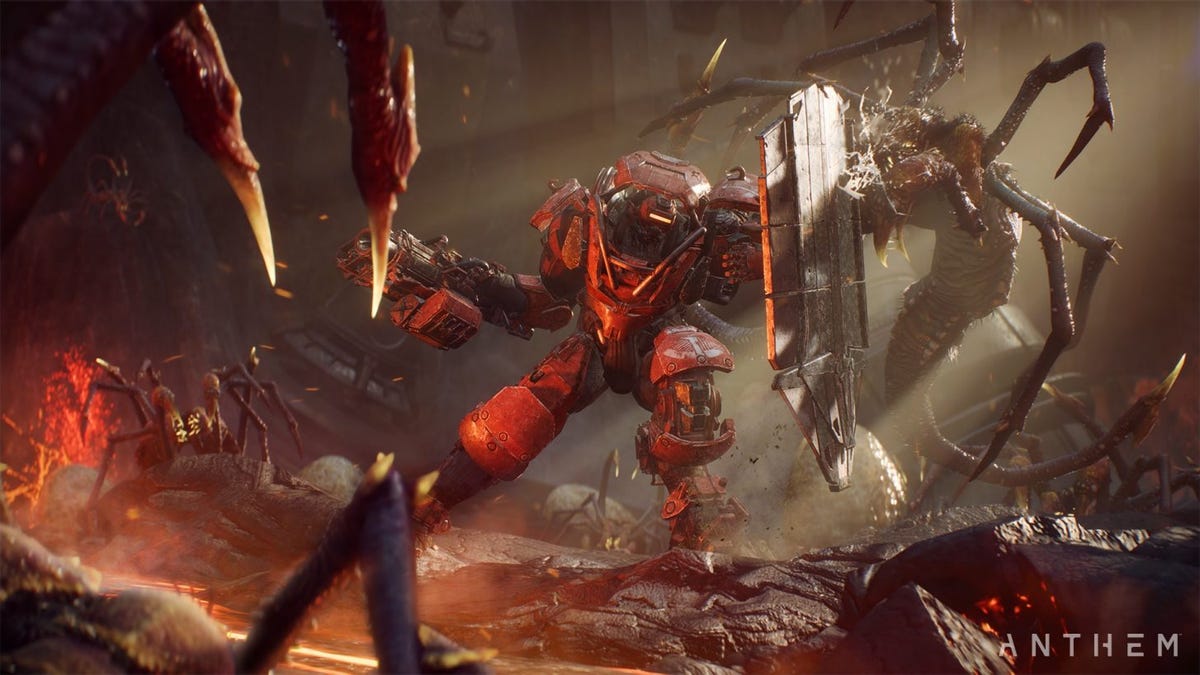
Sourced from Kotaku
Anthem is one such case. While it doesn’t monetise itself in the way most games normally do, instead opting for a small cosmetic store which honestly isn’t even that enticing, the initial sales of a game are often the most money that game will ever make unless it can achieve an exceptional rate of recurrent user spending. It’s not hard to believe that EA happily released the game in this state because they knew the hype alone would be enough to ensure a successful launch (a phrase that feels awkward given the ridiculously high sales targets that publishers set for their games in this day and age). If you factor in this mentality, it would also explain the pitiful excuse for a microtransaction store in Anthem – opting for initial sales to carry the game forward rather than investing time and money into making a remotely compelling offering of microtransactional cosmetics.
Now, on to the final point. As I mentioned previously, there was a point in time during Anthem’s early life when it was actually enjoyable to play because the game offered an increased drop rate for loot. This situation, however, was caused by a bug that messed with the game’s drop rates. Unlike a lot of the core issues that were plaguing the game, BioWare was incredibly quick to fix this issue. In an indirect way, this was the developer’s way of saying that players weren’t allowed to have fun, even after the community unanimously agreed that the unintended loot table bug resulted in a better game. If this were a game where the power and gear economies were based on a thriving player base and a player trading/player marketplace mechanic, then it would make sense. In that case, having a bug like this would inherently decrease the value of rarer, more powerful items when player trading is present. Anthem notably lacks any of these features. The game has a self-contained economy on a per-player basis, so even if loot was dropping at abnormally high rates, it wasn’t a critical issue. There were absolutely no negatives as a result of this bug, and BioWare could have made a very smart decision by leaving it in. Instead, they opted to fix it as quickly as possible and then continue to remain tight-lipped about the game. What does this say to you when a bug makes a game far more enjoyable than it normally is?
Ultimately, Anthem is the result of an industry striving to get away with as much as possible without being called out on it. EA had already done this with the aforementioned Star Wars: Battlefront II in 2017, employing predatory game mechanics and, in 2019, shifting their focus on getting as much money as possible for as poor a product as possible with Anthem.
Both BioWare and EA are now banking on the fact that people are generally good-natured and willing to give something another chance – far more good-natured than the people who run these companies ever are. I can, unfortunately, see this working as I always see people saying that it should be reworked and make its own Destiny-style comeback story (wait, can they do that if it means admitting that Destiny exists?). Either way, you really should not give the game the time of day. What it represents is so slimy, harmful and predatory that affording it a second chance can only mean horrible things for the industry and those genuine developers who have to work in it.






